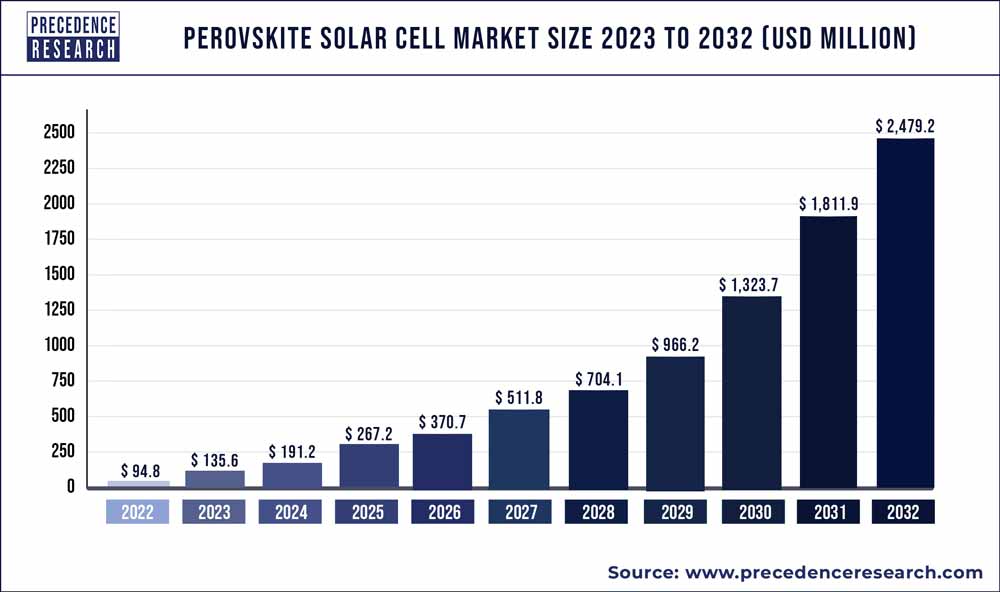Chinese Researchers Achieve 24.68% Efficiency with Innovative Inverted Perovskite Solar Cell
Scientists from China have taken one huge leap further with a certified efficiency of 24.68% in building an inverted perovskite solar cell (PSC) using a co-adsorbed self-assembled monolayer (SAM). That efficiency was achieved with this PSC, a highly efficient yet low-cost solar technology built using a p-i-n inverted structure: hole transport layer (HTL) underneath, and electron transport layer on top. The incorporation of 2-chloro-5-(trifluoromethyl) isonicotinic acid (PyCA-3F) was done in the SAM and [2-(9H-Carbazol-9-yl) ethyl] phosphonic acid (2PACz) for the whole HTL, with physical nanovoids being mitigated at the interface due to reduced interfacial traps besides improved electrical properties of the cell. Improvement in the smooth surface and higher work function value of the SAM layer were the benefits of this method that created a flatten advantageous heterointerface for the perovskite absorber.

The novel PSC has achieved an astonishing 24.68% efficiency, representing a huge leap compared with 23.3% of its control device. Increased stability of the device was also attained. About 90% of their initial efficiencies were contained after 1,000 hours of maximum power point tracking by the encapsulated PSCs. The researchers then applied this technique to organic solar cells (OSCs), producing efficiencies of between 17.71% and 19.51% with similar SAM application strategies. The stability of the OSC devices after 1,000 hours retained approximately 80%, thus confirming the efficiency of this method even further.
This study highlights the promise of co-adsorbed SAM strategies for developing solar devices through typical problems within the field regarding interfacial defects and stability. These results indicate the general applicability of SAM-based approaches in broader applications for solar technology. Such accomplishment will become an increasingly vital milestone in the future further development of high-efficiency perovskite solar cells in terms of both boost and durability over their operation life.
Progress in Perovskite-on-Silicon Tandem Solar Cell Efficiency
- Researchers in the Netherlands achieved efficiencies of 30% in October 2022.
- German researchers at the Helmholtz-Zentrum Berlin achieved 32.5% efficiency in April 2023.
- King Abdullah University of Science and Technology achieved efficiencies of 34.2% in April 2023, almost doubling in May.
- LONGi achieved a close second highest efficiency in June 2023.
- Oxford PV achieved a record for a commercial-sized tandem solar cell at 28.6% efficiency in May 2023.
- Oxford PV announced the commercial launch of a tandem solar cell later this year, promising an estimated conversion efficiency of 27% and energy yield of 24%.
- The maximum theoretical efficiency of perovskite-silicon tandem solar cells is 43%.
Perovskite Solar Cell Market Size and Forecast 2023 to 2032
The global perovskite solar cell market size was estimated at USD 94.8 million in 2022 and is expected to hit around USD 2,479.2 million by 2032 with a registered CAGR of 38.1% from 2023 to 2032.

Perovskite Solar Cell Market Companies
- Alfa Aesar,
- Dyenamo AB,
- Energy Materials Corp,
- Fraunhofer ISE,
- Frontier Energy Solution,
- FrontMaterials Co. Ltd.
- FUJIFILM Wako Pure Chemical Corporation
- G24 Power Ltd.
- Greatcell Energy
- IDTechEx Ltd
- Microquanta Semiconductor Co. Ltd.
- Oxford PV,Panasonic Corporation
- Saule Technologies
- Sekisui
- Solaronix SA
- Solliance solar research
- Swift Solar
- Tandem PV, Inc.
- Toshiba Corporation
- WonderSolar.
Perovskite Solar Cell Market Recent Developments
- In November 2024, according to the lead author Ning Dai, an ultrathin perovskite solar cell was developed by the University of Chinese Academy of Sciences, which has enhanced light absorption capacity through the Gires-Tournois resonator, optimized light captures and utilization.
- In November 2024, Scientists at Northwestern University introduced a layer of protection that prolongs the lifespan of perovskite solar cells and proves to be useful for outdoor applications.
- In November 2024, Researchers at DGIST and the Korea Institute of Science and Technology developed a new technique that enhances perovskite solar cell performance with hydrogen-bonding additives, improving lifetime and efficiency while increasing stability, as published in Energy & Environmental Science.
- In November 2024, Researchers from the University of Surrey developed lead-tin perovskite solar cells that will work with a power conversion efficiency of more than 23% after extending their life and increasing energy use by 66%.
We’ve prepared a service to support you. please feel free to contact us at sales@precedenceresearch.com | +1 804 441 9344